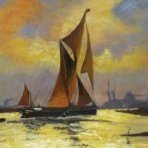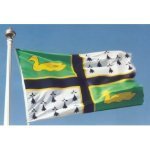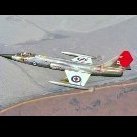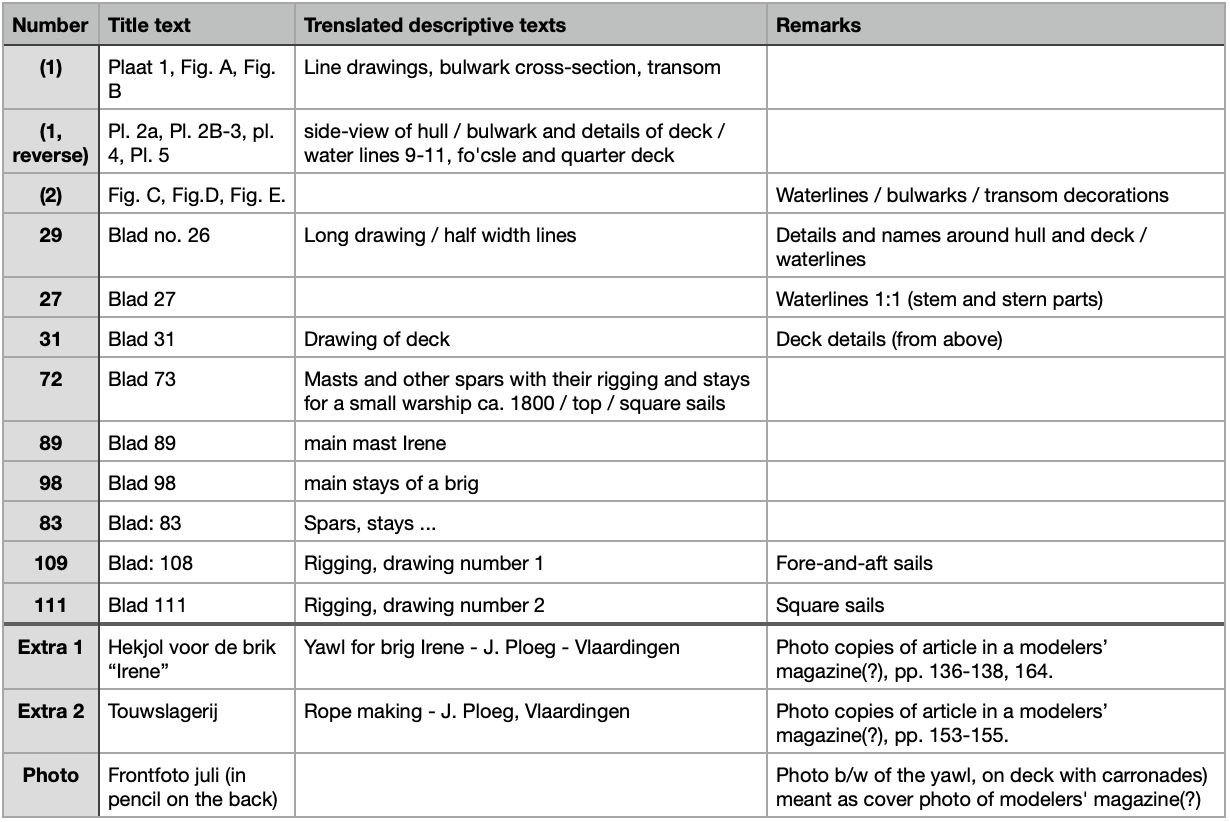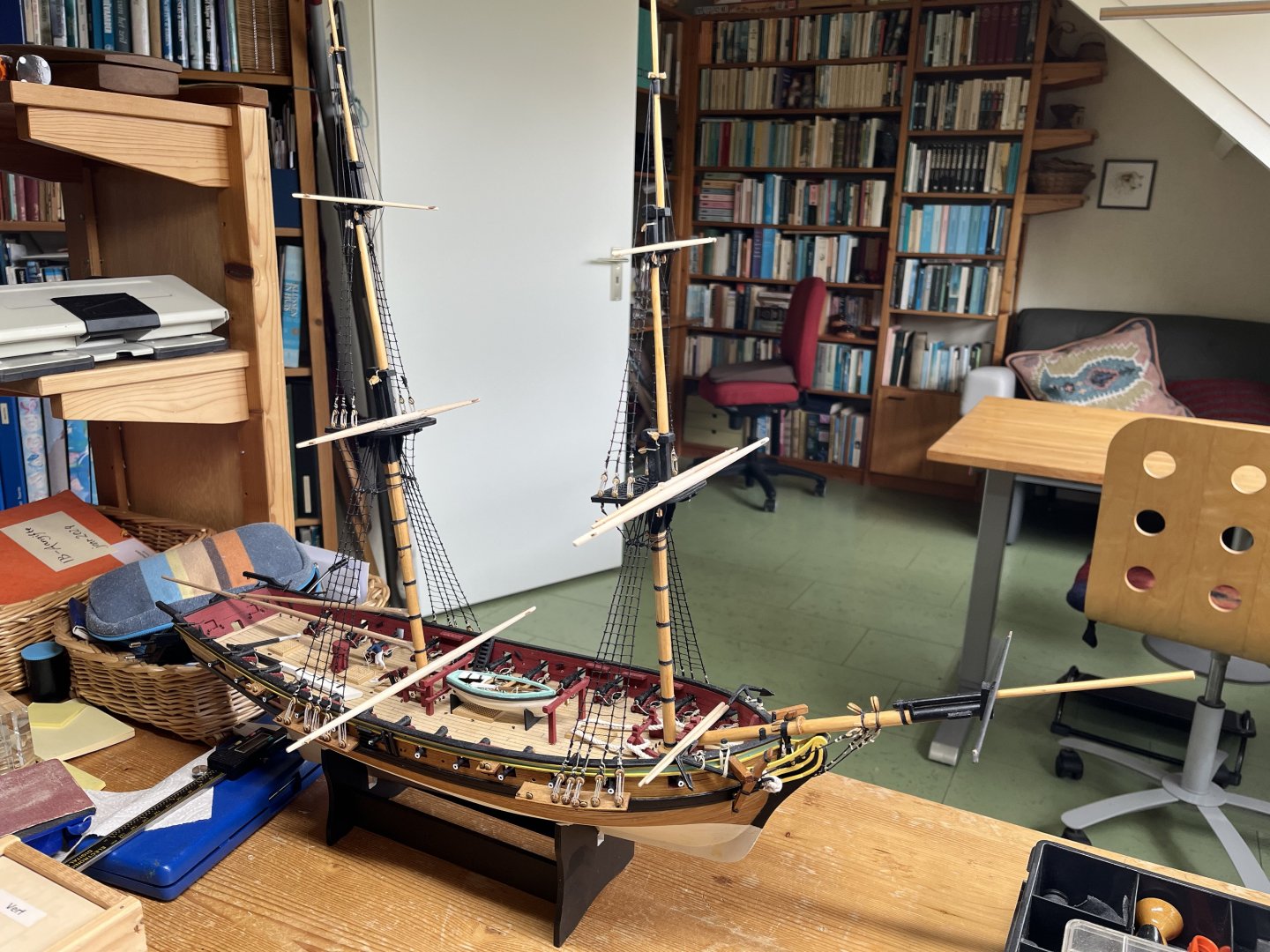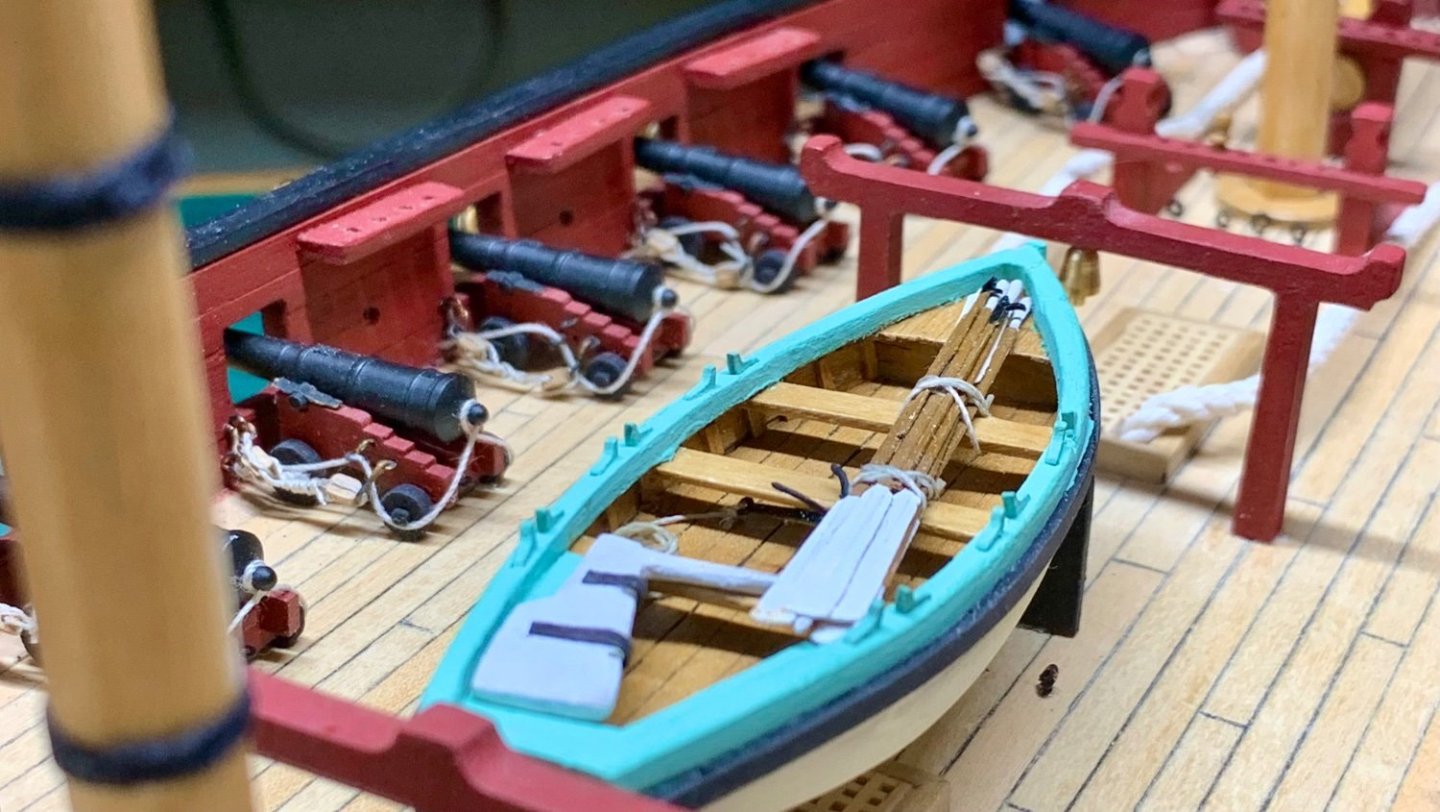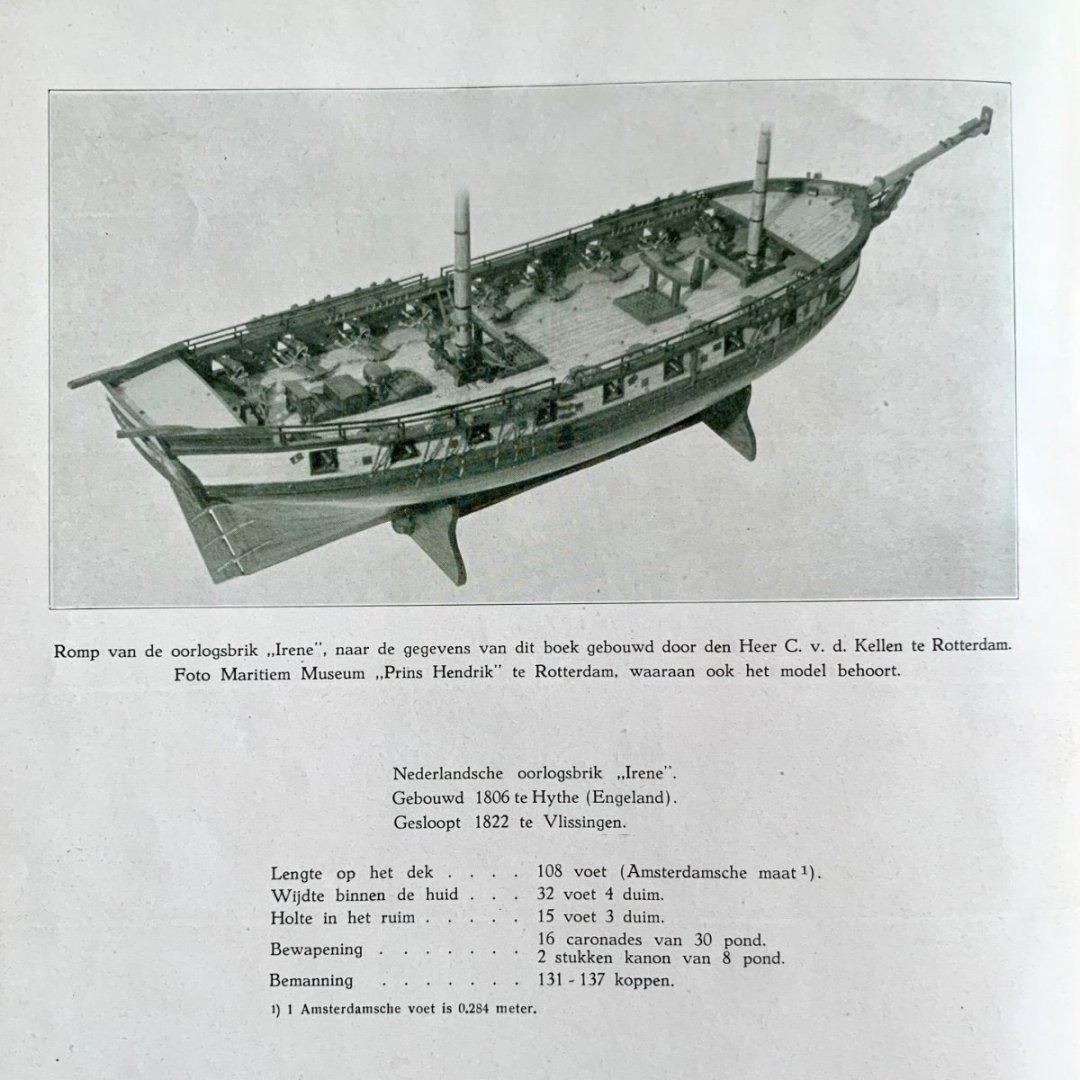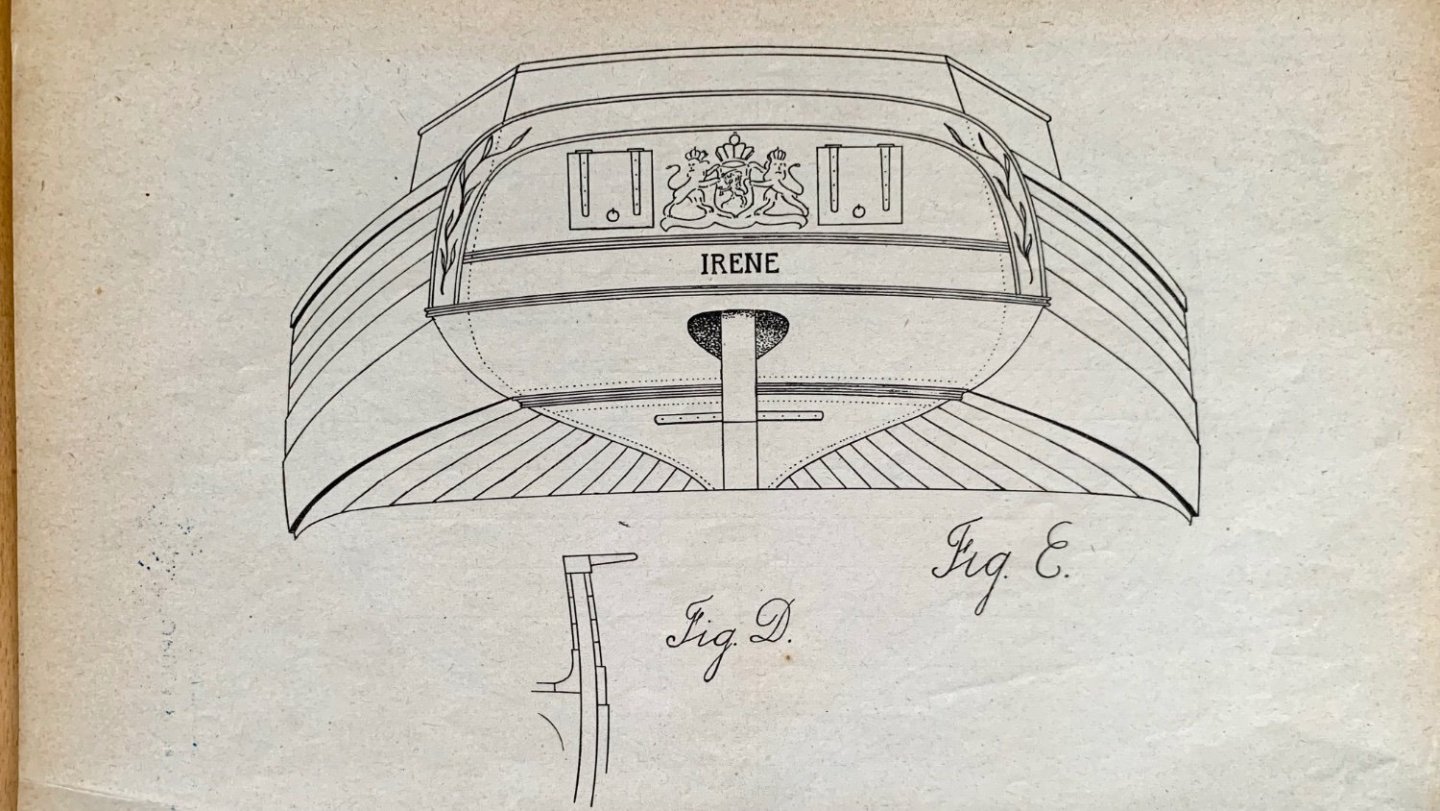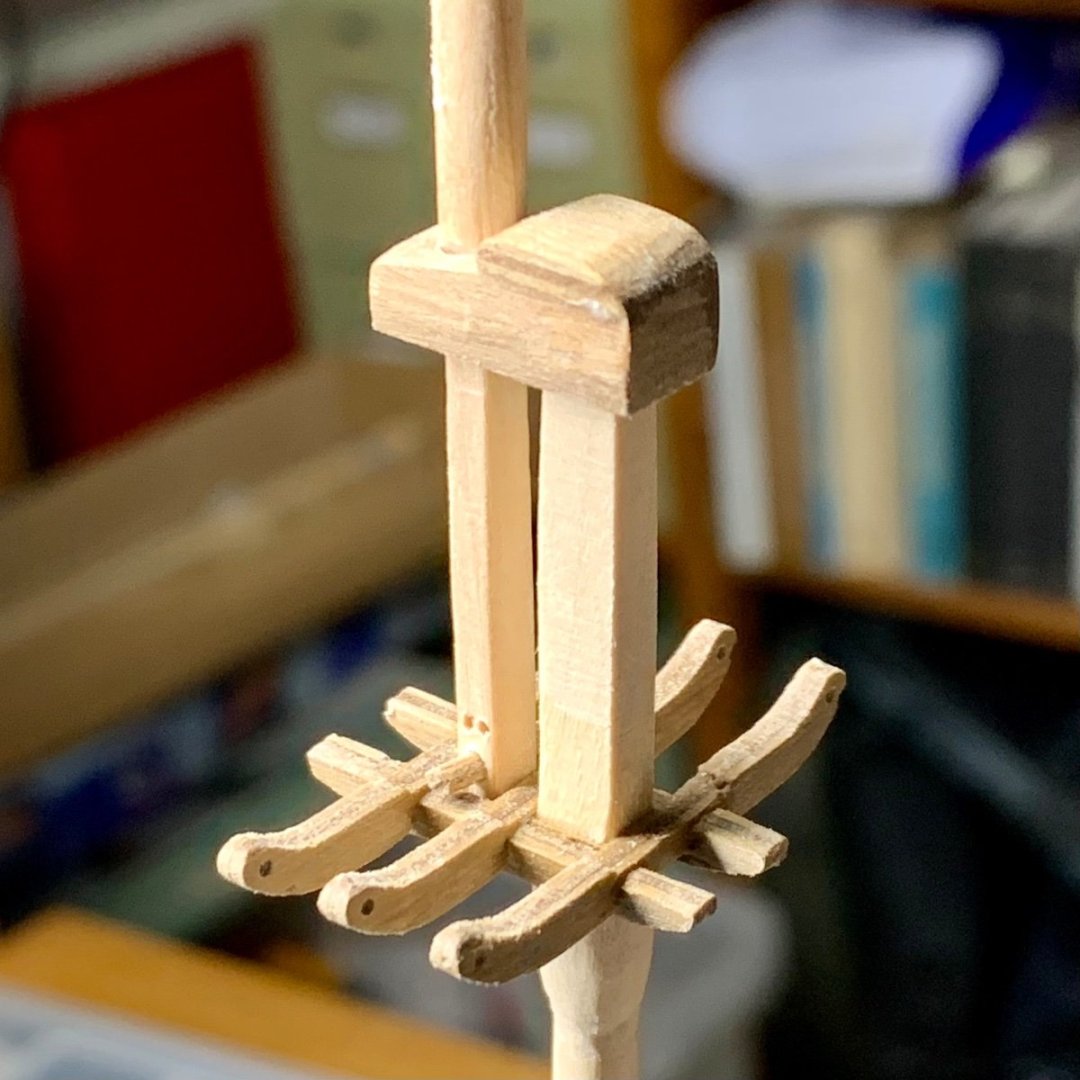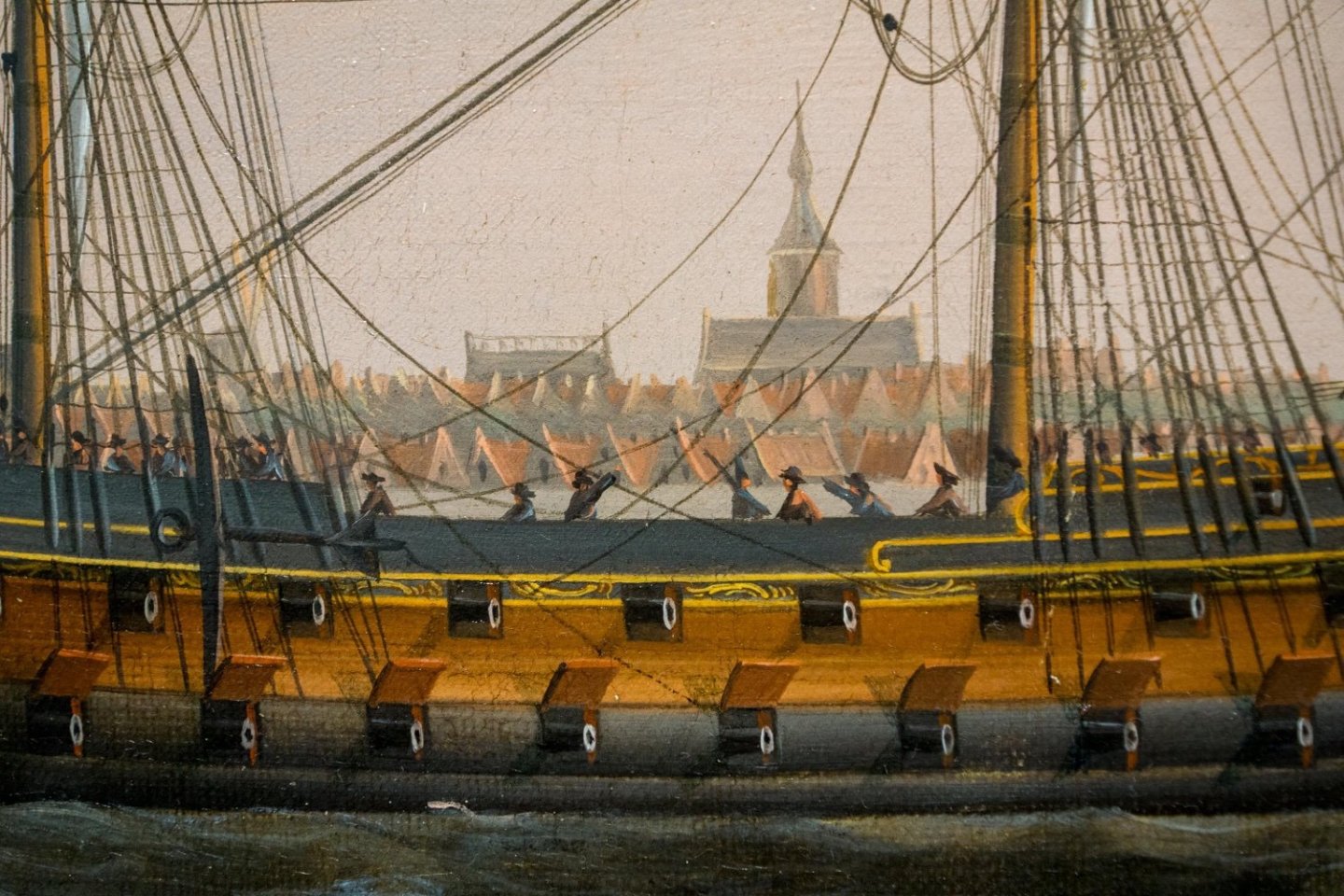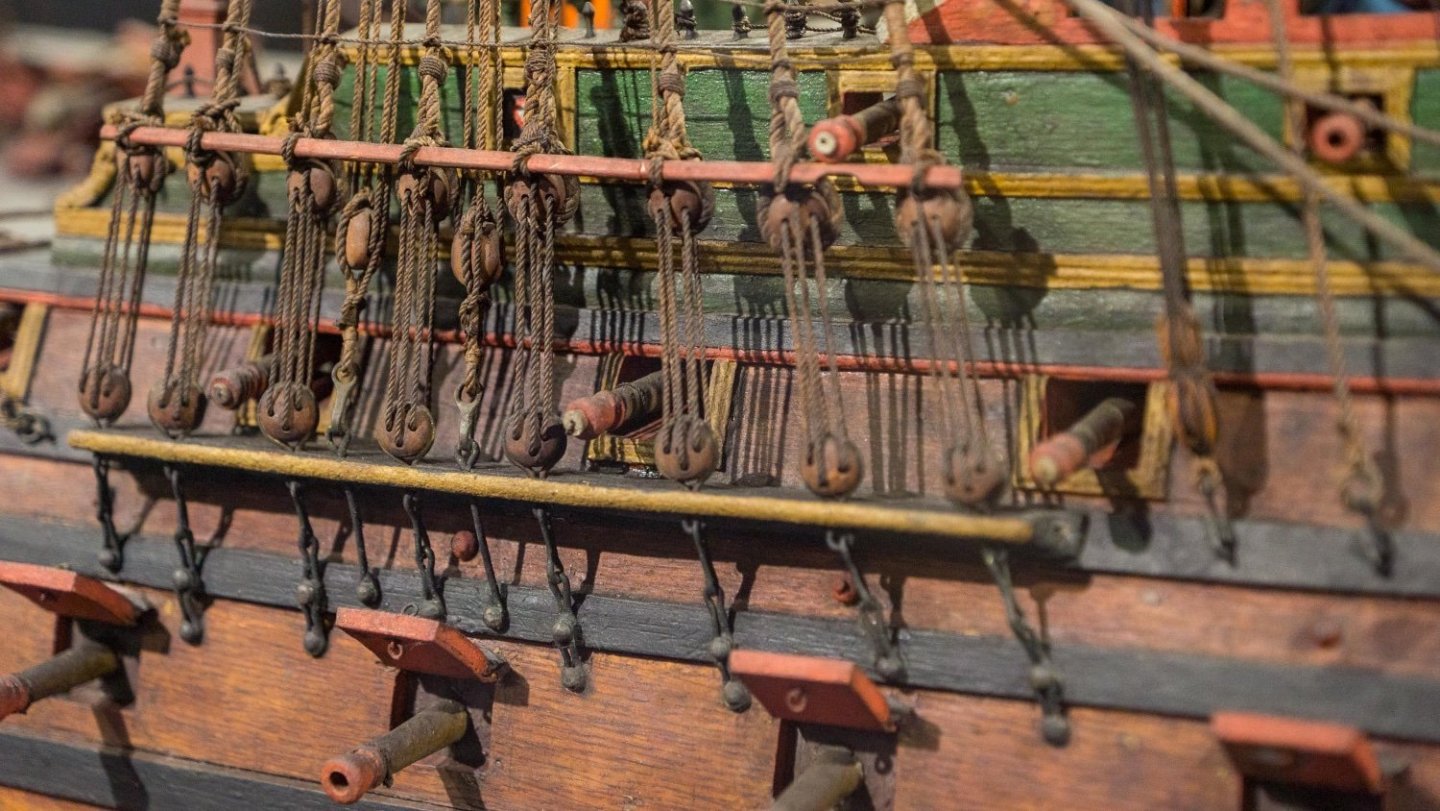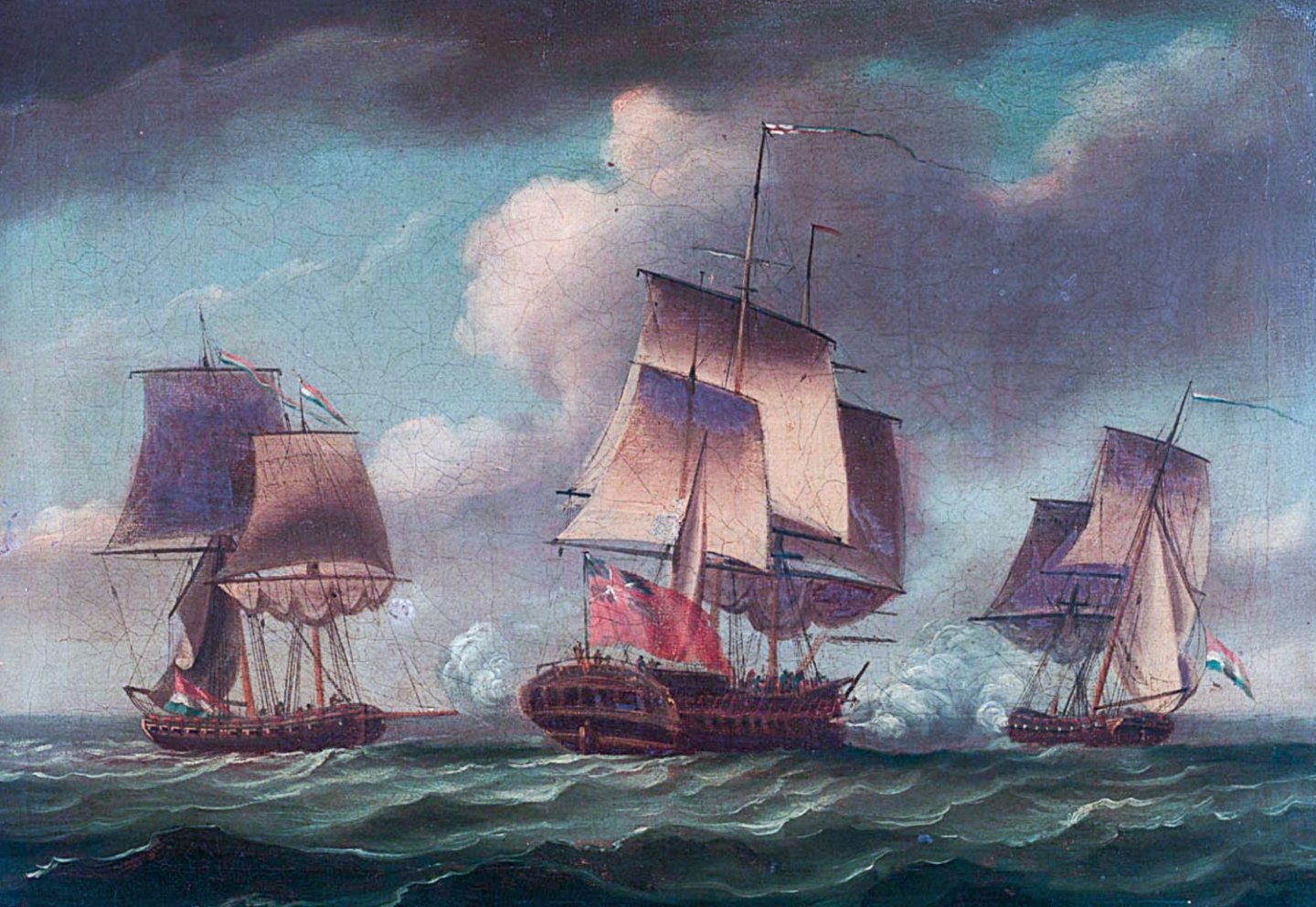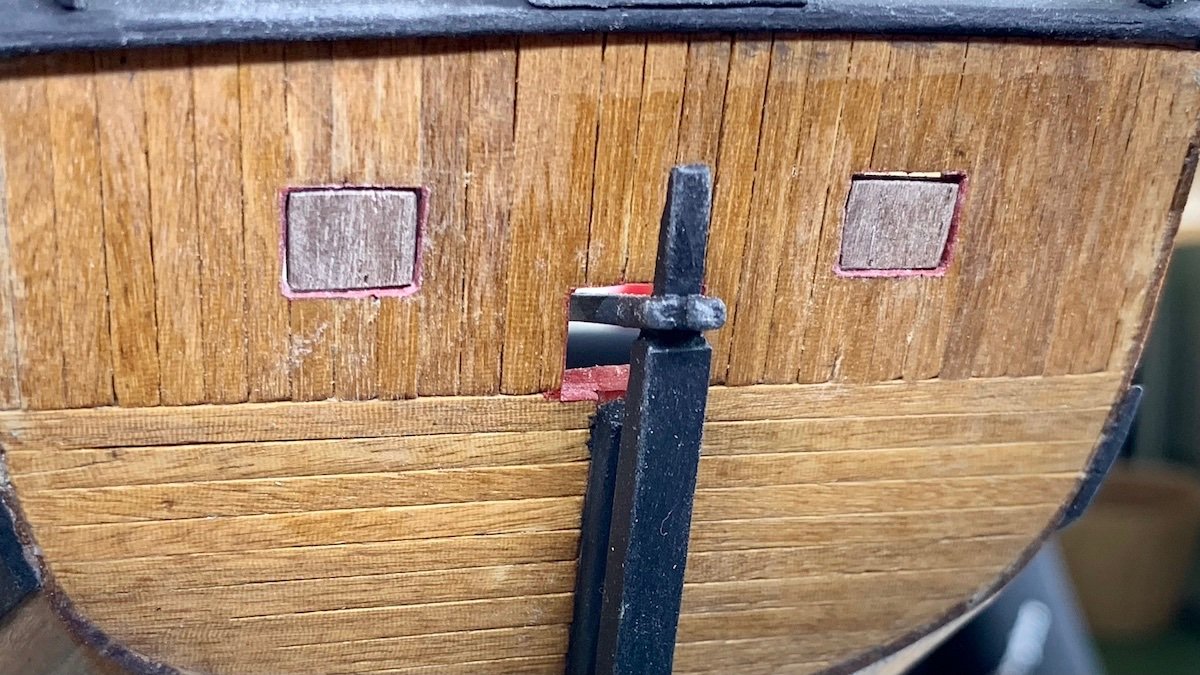-
Posts
61 -
Joined
-
Last visited
About Aa-schipper

Profile Information
-
Gender
Male
-
Location
Twente region (NL)
-
Interests
Reading Patrick O'Brian's (or other author’s) novels; finding out the history of sailing ships and the Dutch Republic in the late 18th century, besides doing photography, archery (as well as supporting the archery club’s governance) and—last but most prominently—enjoying retirement together with The Admiral, SWMBO. O, and building wooden sailing ship models, of course.
Recent Profile Visitors
-
 Aa-schipper reacted to a post in a topic:
Chris Watton and Vanguard Models news and updates Volume 2
Aa-schipper reacted to a post in a topic:
Chris Watton and Vanguard Models news and updates Volume 2
-
 Aa-schipper reacted to a post in a topic:
Chris Watton and Vanguard Models news and updates Volume 2
Aa-schipper reacted to a post in a topic:
Chris Watton and Vanguard Models news and updates Volume 2
-
 Aa-schipper reacted to a post in a topic:
Chris Watton and Vanguard Models news and updates Volume 2
Aa-schipper reacted to a post in a topic:
Chris Watton and Vanguard Models news and updates Volume 2
-
 Aa-schipper reacted to a post in a topic:
Chris Watton and Vanguard Models news and updates Volume 2
Aa-schipper reacted to a post in a topic:
Chris Watton and Vanguard Models news and updates Volume 2
-
 Aa-schipper reacted to a post in a topic:
Lynx by Gaffrig - Panart - Scale 1:62
Aa-schipper reacted to a post in a topic:
Lynx by Gaffrig - Panart - Scale 1:62
-
 Canute reacted to a post in a topic:
The Baltimore Clipper and Topsail Schooner Book Research Thread
Canute reacted to a post in a topic:
The Baltimore Clipper and Topsail Schooner Book Research Thread
-
 AJohnson reacted to a post in a topic:
HMS Mars 1781 by Aa-schipper - Caldercraft - Scale 1:64 - Dutch privateer
AJohnson reacted to a post in a topic:
HMS Mars 1781 by Aa-schipper - Caldercraft - Scale 1:64 - Dutch privateer
-
 Aa-schipper reacted to a post in a topic:
The Baltimore Clipper and Topsail Schooner Book Research Thread
Aa-schipper reacted to a post in a topic:
The Baltimore Clipper and Topsail Schooner Book Research Thread
-
 Aa-schipper reacted to a post in a topic:
The Baltimore Clipper and Topsail Schooner Book Research Thread
Aa-schipper reacted to a post in a topic:
The Baltimore Clipper and Topsail Schooner Book Research Thread
-
 thibaultron reacted to a post in a topic:
The Baltimore Clipper and Topsail Schooner Book Research Thread
thibaultron reacted to a post in a topic:
The Baltimore Clipper and Topsail Schooner Book Research Thread
-
 Nipper reacted to a post in a topic:
HMS Mars 1781 by Aa-schipper - Caldercraft - Scale 1:64 - Dutch privateer
Nipper reacted to a post in a topic:
HMS Mars 1781 by Aa-schipper - Caldercraft - Scale 1:64 - Dutch privateer
-
 Ronald-V reacted to a post in a topic:
HMS Mars 1781 by Aa-schipper - Caldercraft - Scale 1:64 - Dutch privateer
Ronald-V reacted to a post in a topic:
HMS Mars 1781 by Aa-schipper - Caldercraft - Scale 1:64 - Dutch privateer
-
In between other hobbies, the Mars is progressing bit by bit. The main step now is that I’ve attached the crossjack to the main mast—ropes and knots only, no tricks with pins, because later I may want to set the sails not quite squarely. I am now trying to determine the size of paper templates for the sails, by hanging the other spars on the main mast in place temporarily by a single thread, and stick the simple paper sails to the spars. I want to keep the spars detachable for the moment, so as to be able to tie the(still to be made) ‘silkspan’ sails to the spars separately, with some working space around them, before attaching the whole set to the mast permanently. The idea for the final result is to have some sails set, a few drawn up hastily, and the topgallants furled up more neatly, more or less as shown in Dodd’s (undoubtedly fantasised) painting of the Hercules and Mars in action against HMS Artois (detail from the painting on the website of the RMG, where the Dutch ships don’t have t’gallants), or on the cover of Marquardt’s Eighteenth Century Rig.
-
Enthused by Frolick’s recommendation, I searched for book reviews before committing forty-odd euros (plus shipping costs), and decided to let this one pass: it was recommended in the journal Sea History for its social history aspect and for publishing some unique illustrations, but was said to be faulty when it came to technical aspects—which would be my main interest (https://issuu.com/seahistory/docs/sh_087_winter-1998-99/45).
-
Revisiting this old question for my planned next build: agreeing that likely all (full-rigged) ships of the Royal Navy were long since copper-bottomed by the time of the Napoleonic wars, does this also apply to smaller vessels, such as cutters or schooners? And what about such smaller vessels in private use, both purpose-built privateers and merchant fleet? Your opinions would be welcome!
-
 Aa-schipper reacted to a post in a topic:
Lynx by Gaffrig - Panart - Scale 1:62
Aa-schipper reacted to a post in a topic:
Lynx by Gaffrig - Panart - Scale 1:62
-
 Aa-schipper reacted to a post in a topic:
Topsail schooner sail plans and rigging
Aa-schipper reacted to a post in a topic:
Topsail schooner sail plans and rigging
-
 Nipper reacted to a post in a topic:
HMS Mars 1781 by Aa-schipper - Caldercraft - Scale 1:64 - Dutch privateer
Nipper reacted to a post in a topic:
HMS Mars 1781 by Aa-schipper - Caldercraft - Scale 1:64 - Dutch privateer
-
Hello Nipper, Probably you're correct about most of the sheets: the book, and of course your Caldercraft kit, will give you enough information to build the ship. However, maybe the deck layout may be a part of the kit you want to change from the kit to get closer to Irene. Therefore, I attach scans of the two drawing sheets (in halves, because of their awkward lengthy formats) that show the wheel, hatches, pumps, capstan etc. Might come in handy for you or others. (And gives you a chance to learn some nautical terms in Dutch 😉.) Irene deck lay out Petrejus.pdf
-
For figurines, I used several sources: - Some old-fashioned metal models from Amati; - From Vanguard Models (@chris watton) I obtained figurines of captain Lord Cochrane (as a stand-in for 'my' captain Pieter Hoogeboom) and of a crew loading a gun; - In different 3D-print file sources on the net I searched for '18th century mariner', 'pirates' and similar terms and browsed through many pages with images of the available .STL files; I bought a couple that looked convincing and had them printed on a resin 3D printer by a kind acquaintance. They're ready to be glued in place once I'm done with belaying the rigging on deck.
-
Hello @Nipper, Thanks for your renewed welcome. You mentioned Petrejus' book on Irene. I just received a second copy of the Dutch version of the book, which I bought online because I realised that my first copy missed all but one of the build plans on loose sheets. And now I wonder how many drawings there were in total, because mine are numbered, but not consecutively. However, since the highest number is 111, I doubt if there really were more than a hundred separate sheets? Maybe you can compare with your copy to see whether you or I miss some: Evidently, the 'Extra' photo copies and the black-and-white photo do not belong to the original book.
-
 Nipper reacted to a post in a topic:
HMS Mars 1781 by Aa-schipper - Caldercraft - Scale 1:64 - Dutch privateer
Nipper reacted to a post in a topic:
HMS Mars 1781 by Aa-schipper - Caldercraft - Scale 1:64 - Dutch privateer
-
 Paul Le Wol reacted to a post in a topic:
HMS Mars 1781 by Aa-schipper - Caldercraft - Scale 1:64 - Dutch privateer
Paul Le Wol reacted to a post in a topic:
HMS Mars 1781 by Aa-schipper - Caldercraft - Scale 1:64 - Dutch privateer
-
 Ronald-V reacted to a post in a topic:
HMS Mars 1781 by Aa-schipper - Caldercraft - Scale 1:64 - Dutch privateer
Ronald-V reacted to a post in a topic:
HMS Mars 1781 by Aa-schipper - Caldercraft - Scale 1:64 - Dutch privateer
-
 petervisser reacted to a post in a topic:
HMS Mars 1781 by Aa-schipper - Caldercraft - Scale 1:64 - Dutch privateer
petervisser reacted to a post in a topic:
HMS Mars 1781 by Aa-schipper - Caldercraft - Scale 1:64 - Dutch privateer
-
Alive and swimming I started following Gaffrig’s build log in which he apologised when he came back after a year of inactivity on MSW (link). Returning after a year and a half, I can't think of what I then have to say, short of kowtowing in public. Moreover, a week ago I had to commemorate (not celebrate!) the fact that I have had this kit for ten years already. Over the years I have come to know more than probably anyone else about the Mars, its crew and its owner, but the ship still is not finished. Anyway, I have some progress to report: - Following Julier's suggestion in his New Period Ship Handbook (and my own instinct) I glued the masts in place before mounting the spars on them. The idea is to have more working space to attach the rigging - I have installed the shrouds, fiddling a bit with the height of the deadeyes, because the simple jig suggested in the drawings of the building instructions did not work for me and the more sophisticated solutions to keep a couple of deadeyes on exactly the same height shown in some build logs (which I forgot to retain for linking here...) I discovered too late. Well, I assume that Dutch privateers did not work to the standards of Royal Navy officers, so maybe my sloppiness reflects reality somewhat. - Tying in the ratlines as detailed in the HMS Mars building sheet I found easy and even enjoyable. (Maybe building a three-mast ship model is not such a drag, after all!). - Most recently, I have planed and sanded the spars to shape from the round dowel in the kit. Somehow, I did not find the 4 mm piece needed for the driver boom and gaff, which goes to show you should check the box content thoroughly upon arrival--or to build faster so you don't lose things over the years. At a nearby hobby and art store I could stock up on dowel, so that problem was solved without much trouble or cost, though it's beech wood instead of lime tree(?) as in the kit. Since the spars will be painted black, no-one will notice. - In the meantime, I have studied some issues of historical shipbuilding and rigging, and found out about some more differences between British and Dutch shipwright insights and traditions. The upshot is that I will continue to try to adapt the kit to what the Mars may have looked like when she started her cruise against British shipping in November 1781, but without spending too much effort or money on buying or fabricating historically (more) correct pieces. For instance, Petrejus in his Brig Irene showed that the tops in Dutch ships had an almost semi-circular form as opposed to the squarish tops of British ships, but I am not going to remove the tops that I already glued in to the masts. However, I did strike the dolphin striker from the bowsprit as it was a British innovation popularised after Mars was built, and will adapt the run of lines accordingly. For another example, British rigging used open hearts in some lines, whereas Dutch riggers worked with double blocks. As a (more or less) novice model builder, and as the British version are available in the kit, I will keep the open hearts and other blocks from the kit. The result of this all will undoubtedly be a hotchpotch of British, Dutch and maybe even French characteristics, because my main source besides Petrejus is Eighteenth-century rigs & rigging by K.H. Marquart, who gives impressively detailed and extensive descriptions of British, French, German and Dutch rigging. But when he writes about "continental" ships, I am not always sure if that covers French and/or German and/or Dutch. Never mind; I'm not expecting maritime museums to make a beeline to buy my model once it's complete... As long as it satisfies myself, it's ok. - Talking about satisfying myself, I have decided to make a bit of a diorama of the model by putting a number of figurines on board (though by far fewer than the 146 heads that must have manned the Mars originally). Another way to make it more lively that I want to employ is adding sails to the model. The idea is that I want to show a privateer in action, with: (1) a crew charging one of the fans, (2) a number of hands ready to board an enemy ship (an alternative outcome of the battle with HMS Artois), (3) some musketeers firing from the main top. This will require sails set for a moment just before boarding: advancing at a slow pace (with most sails furled hastily) and the wind coming more or less from abeam so that some fore-and-aft sails can be shown. - I have decided to use silkspan for sails, as I think it will give a better scale impression than textile. The material has been ordered and I watched some YouTube tutorials, which I may linkt later once I'm coming to that stage of the build.
-
The deck is taking shape: the guns have their breeching and outhaul tackles. The outhaul tackle is an extra. Having seen the display of guns on HMS Victory, HMS Warrior and HMS Unicorn, it appeared that they must be shown, and it makes sense, because without outhaul tackle, you cannot stow the guns next to gunports and they take no precious space on deck, the ends being wound up between the blocks on either end. Hence I bought the smallest blocks I could find online (2 mm), measured out some 7 meter of .25 mm rope, and put in a bit of time. I had previously provided the gunports with four eyelets: two for the breeching rope and two for the outhaul tackle. In the picture, also the additional cutter is shown. According to Petrejus (and as one may read in any Aubrey/Maturin novel), ships had a number of cutters, gigs and the like, so two (the other one will hang in the davits a the stern, eventually) seemed to me the minimum for this privateer. To be honest, I'm fairly satisfied with the look of the deck like this.
-
Well, Hardly necessary to respond to you anymore, @Nipper, as the main answers are already there: Irene started life as a Cruizer-class RN brig, but Commander Fanshawe struck to the Dutch fleet after foundering on the Dutch coast due to a heavy storm in December 1811. Let me add pictures of the frontispiece of Petrejus' book, which gives the sizes (in amsterdam feet = 0.284 m = 0.932 ft) and a detail of one of the plans in the book that shows the design of the stern.
-
I wonder if anyone still follows my build log—I’m soooo slow. After enjoying summer, vacation, sports and other hobbies, which took me well into the new year, I finally have a little progress to report on Mars. The masts were filed and sanded into more or less correct shape—not down to the historically correct sizes at the level of a tenth of a millimetre, I admit, but no-one of my expected audience (very few family members, all bigger landlubbers than me) will notice and I find it downright scary to make the wood so thin and fragile. With my clumsy, erratic moves the risk of breaking something during the build is big enough as it is. But what makes it worthwhile to post about the masts, is that I found in the priceless Petrejus (confirmed by other online sources) that Dutch mastcaps followed the French design, with a closed ‘head’ on the cap rather than the simple oblong block with two holes in English style that are part of the kit. Starting from the provided English-style pieces, I simulated the Dutch/French style mastcaps with a couple of scrap pieces of 2 mm walnut. (Photo from before painting them black, for clarity). Also in Dutch rather than English style, and also found in Petrejus’ book on Brig Irene, I made two holes just above the fid for raising and lowering the topmasts by cables that were hung through the mastcaps when topmasts had to be taken down, e.g., in stormy conditions. In English style, that part of the topmast would have been octagonal with holes for cables in diagonal lay out, which Petrejus claims was more efficient as it avoided the cables getting entangled—but apparently Dutch shipwrights did not do such newfangled things.
-
Maybe a matter of 'fashion' that might change over time? I found a couple of paintings from the 1780s-1800s where ship guns were given a white circle around the mouth. The ships depicted were Dutch, though the painters were both Dutch and English. And in the Rotterdam Maritime Museum there is a contemporary model of a 1720s ship with red 'socks' covering the mouth and part of the barrel. Sorry, we're going a bit off-topic. To return to centring guns: both photos attached show guns neatly centred in the gunports both horizontally and vertically. (Info on pictures: my photo with detail of a painting is from Engel Hoogerheyden's painting 'Dutch blockading fleet...in the roads of Flushing' (1784) at the National Maritime Museum Amsterdam; my photo of a detail of VOC ship Padmos/Blydorp (1722-23) at the Maritime Museum Rotterdam; reproduction of R. Dodd 'Artois capturing two Dutch privateers, 3 December 1781' from the NMM Greenwich collection.)
-
Extreme lines, not your ‘thirteen in a dozen’ ship. What a sleek hull, and that extremely long bowsprit 😍! Very beautiful and certainly on my wish list, too! Thanks, James, for this sneak preview into the building manual 😉
- 80 replies
-
- Grecian
- Vanguard Models
-
(and 3 more)
Tagged with:
-
Stern chaser gunports closed While I'm collecting courage to attack the deadeyes 😉, I have followed another of Petrejus's suggestions: the stern chaser gunport were closed unless in use, he contends, so I made two little hatches from some centimeters of leftover walnut, glued onto some leftover boxwood (never throw away scraps of wood of any size!). I'd love to make them working, with real hinges. Had I thought of this in time, then I could have ordered some hinges when last I bought things from a modelling webshop (there is no specialised shop in my neighbourhood).
About us
Modelshipworld - Advancing Ship Modeling through Research
SSL Secured
Your security is important for us so this Website is SSL-Secured
NRG Mailing Address
Nautical Research Guild
237 South Lincoln Street
Westmont IL, 60559-1917
Model Ship World ® and the MSW logo are Registered Trademarks, and belong to the Nautical Research Guild (United States Patent and Trademark Office: No. 6,929,264 & No. 6,929,274, registered Dec. 20, 2022)
Helpful Links
About the NRG
If you enjoy building ship models that are historically accurate as well as beautiful, then The Nautical Research Guild (NRG) is just right for you.
The Guild is a non-profit educational organization whose mission is to “Advance Ship Modeling Through Research”. We provide support to our members in their efforts to raise the quality of their model ships.
The Nautical Research Guild has published our world-renowned quarterly magazine, The Nautical Research Journal, since 1955. The pages of the Journal are full of articles by accomplished ship modelers who show you how they create those exquisite details on their models, and by maritime historians who show you the correct details to build. The Journal is available in both print and digital editions. Go to the NRG web site (www.thenrg.org) to download a complimentary digital copy of the Journal. The NRG also publishes plan sets, books and compilations of back issues of the Journal and the former Ships in Scale and Model Ship Builder magazines.





